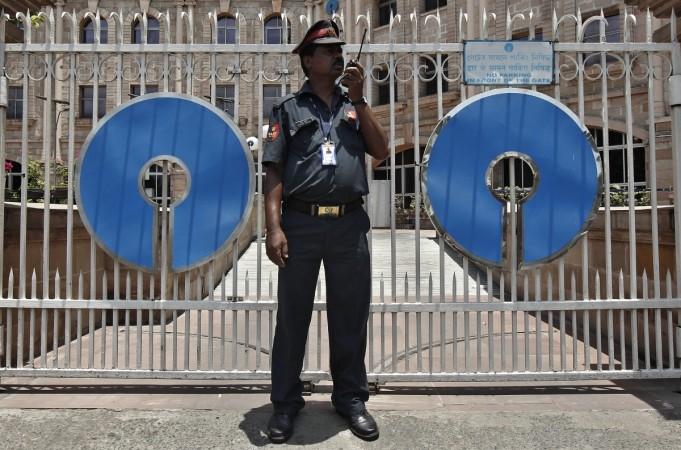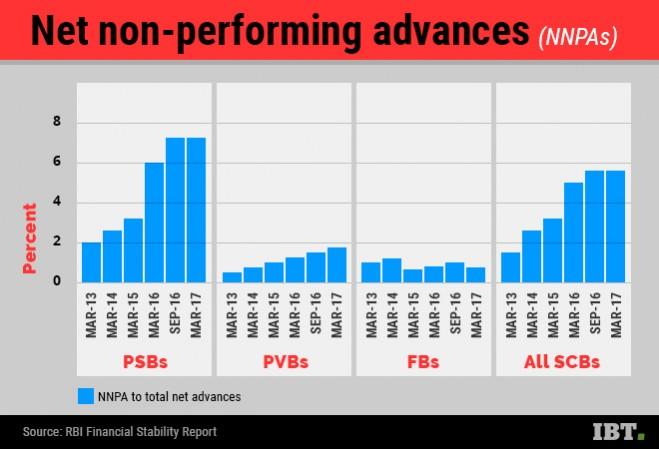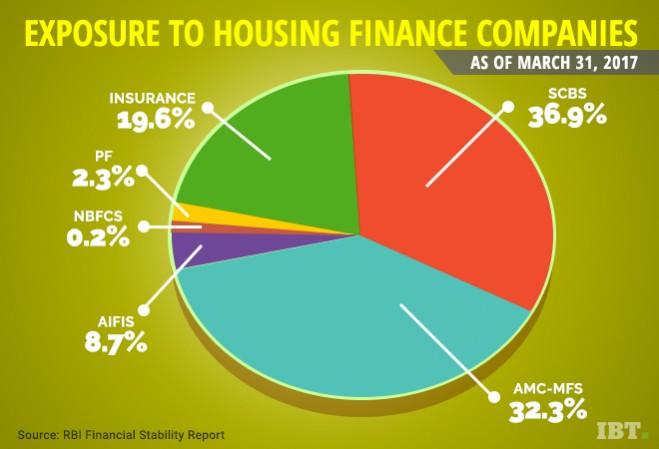
The festering non-performing assets of scheduled commercial banks (SCBs), with public sector banks bringing up the bulk of them, need a good start somewhere when it comes to a resolution.
When over 52 percent of the debt burden of PSU banks is held by ten large corporates, the task would seem less problematic. But the Reserve Bank of India's latest Fiscal Stability Report (FSR) offers little hope in this direction, though the bank's drive to initiate bankruptcy proceedings against large borrowers through last month, marks a new crusade to demolish the huge NPA mountain.
While corporate profits have been shrinking, and banks keep hoping that the NPA problem will solve itself, the last three months have made it amply clear that India is actually shedding corporate jobs, with big corporate investments not really moving at god-speed.
Big-ticket investments signal higher optimism from public and private sector companies. The fact is that profits from the end of borrowers have been shrinking, especially among bigger borrowers in the steel, mining, power and telecom sectors. Banks, which are now focussed on resolving stressed assets in these sectors, are going very slow on extending credit to them.
Most Indian banks with high exposure to these industries would struggle to pass a Federal Reserve-style stress test when their larger borrowers are relatively leveraged very high, even as they struggle with stalled or scrapped projects. The power, construction and iron and steel industries also suffer from high interest encumbrances, says an RBI report released late last month.
According to Centre for Monitoring the Indian Economy (CMIE), the aggregate value of stalled projects in the quarter ending June was Rs 2.4 lakh crore. The total number of stalled projects increased during the quarter ending June, rising to Rs 2.4 lakh crore, against only Rs 35,000 crore of stalled projects during the March quarter.
Projects worth only Rs 1 lakh crore were commissioned during the June quarter, the Rs 14,000-crore Bangalore Metro Rail project being among the larger ones.

Bank stress, industry lethargy
The credit crunch is partly a creation of the banks themselves. Gross non-performing advances (GNPAs) of the banking sector rose between September 2016 and March 2017, but the stressed advances ratio (SAR) declined in the same period due to the inevitable fall in restructured standard advances. However, SAR in the industry sector rose from 22.3 per cent to 23.0 per cent mainly on account of sub-sectors such as cement, vehicle, mining and quarrying and basic metals.
The real sufferers under the circumstances are small businesses who have been exposed to the same credit pessimism which larger borrowers are facing. When it comes to NPAs, the hundred largest borrowers accounted for 15.2 per cent of the loans and 25.6 per cent of the bad loans. And, due to various reasons down the years, banks have been unable to recover these loans.
Capacity utilisation of the manufacturing industry is hovering at an average of 75 percent while investments have slowed down, despite the government announcing Make In India, Digital India and Smart Cities initiatives to attract manufacturing and create jobs. Unless utilisation peaks, CEOs are unlikely to consider making fresh investments.
In the quarter ended March 2017, fresh investments by Indian companies worth Rs 2.92 lakh crore were announced. Towards the end of the June quarter, investment volumes dropped to Rs 1.4 lakh crore. All this, despite the government's best attempts to attract capital.
Indian firms announced only 448 new projects, of aggregate investments of Rs 1.35 lakh crore, in the June quarter. This was far lower than the average quarterly announcements of Rs 2.2 lakh crore seen in the past three years, according to CMIE.
RBI's macro stress test indicates that under the baseline scenario, gross NPAs of SCBs may rise from 9.6 per cent in March 2017 to 10.2 per cent by March 2018. Its banking stability indicator (BSI) worsened between September 2016 and March 2017 due to deterioration in asset quality and profitability.
Last month, while advising banks to initiate the insolvency resolution process in select accounts under the provisions of the Insolvency and Bankruptcy Code (IBC), RBI had said that accounts with outstanding amounts of more than Rs 5,000 crore, of which at least 60 percent was classified as non-performing by banks as of March 31, 2016, could be referred for bankruptcy. This is a good start to a process, where extending the ambit of the Bankruptcy Code across various sectors is likely to take months, even years.
Subsequently, RBI's moves to advise banks to set aside 50 percent provisioning against secured exposure and 100 percent against unsecured exposure in all cases referred for bankruptcy is a right step in the right direction for the Bankruptcy Code.
Loan rangers without horses to ride
Most Indian banks have shied away from recovering their larger loans primarily over fears of them messing up their balance-sheets. Restructuring the loans, often at more reasonable interest terms to larger borrowers or individuals with the right amount of political clout would take them off the bank's NPA list temporarily, but affect the bank's asset quality and profitability in the long run.
This has made it difficult for banks to not be reactive on the interest payout front vis-a-vis savings and fixed deposits on which small investors are dependent, often for a living. Rising NPAs have meant that interest payouts under these heads have been repeatedly revised, with fears arising that the average interest on fixed deposits currently offered -- in the 6-6.25 percent range -- might soon match that offered to savings accounts holders.

On the other hand, banks have been repeatedly pressured into reducing rates by the RBI through successive repo rate (interest paid by RBI when lending money to banks) cuts, which do not place them in a comfortable position when it comes to recovering loans at sub-par interest rates. Foreclosure options are limited for banks, and this does not make it easy to write off loans and take equity in the borrowing companies instead.
If banks could indeed foreclose on companies and take equity in them, that would help borrowers get more attention from investors, and make it easier for the banks to make good on their loan recovery losses. The government made tentative moves towards setting up a bankruptcy code last year, but this is being implemented only selectively at the moment.
The idea of a "bad bank" was suggested by RBI deputy governor Viral Acharya so that the most unmanageable loans could be taken off bank balance-sheets, leaving them free to focus on handing out new loans. The idea was to protect a bank or groups of banks splitting out a loan if they had made them out sensibly after due diligence and without undue political interference. Of course, this isn't the case with many a loan which turns into an NPA.
Fixing the price at which a "bad bank" can buy assets – especially, valuing loans given to stalled or stranded projects -- to hold them in custody would be tricky. Hence, banks have mostly opposed the idea and urged RBI to allow existing programmes to work. But that does not put off the need to take hard decisions on tackling NPAs which banks have been sidestepping for years. For now, counter-NPA measures from RBI are off to a good start, and hopefully, will make slow and steady progress in destressing the balance-sheets of India's banks.









!['Had denied Housefull franchise as they wanted me to wear a bikini': Tia Bajpai on turning down bold scripts [Exclusive]](https://data1.ibtimes.co.in/en/full/806605/had-denied-housefull-franchise-they-wanted-me-wear-bikini-tia-bajpai-turning-down-bold.png?w=220&h=138)



